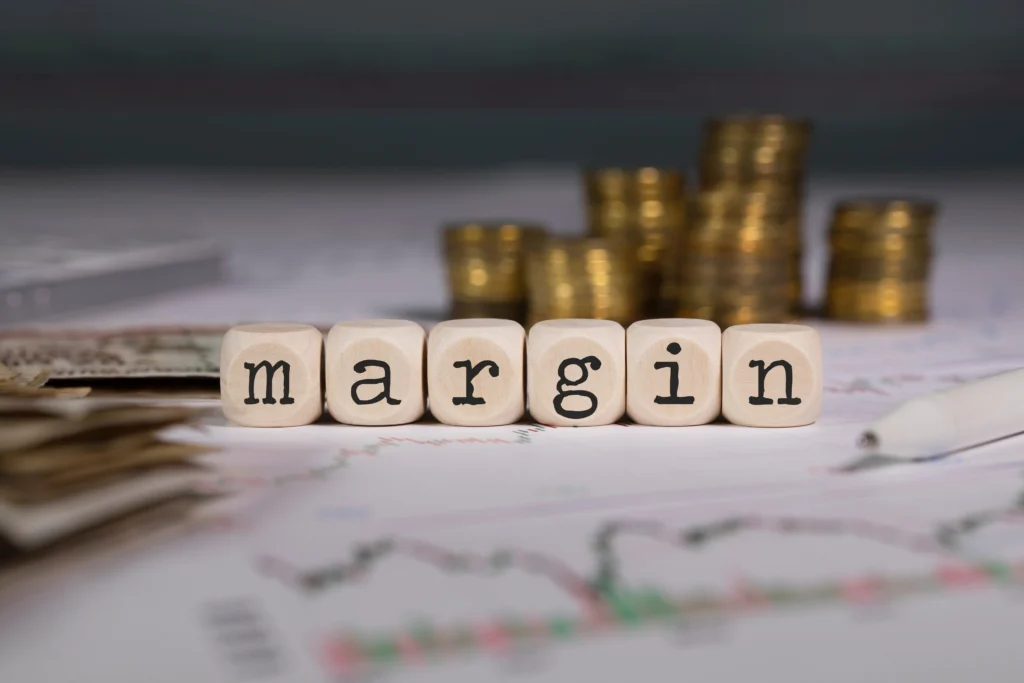
Leverage and Margin Requirements play a crucial role in the world of trading. They allow traders to control larger positions in the market with a smaller amount of capital. However, it’s important to fully grasp these concepts and their implications before venturing into leveraged trading.
Leverage refers to the use of borrowed funds or financial instruments to increase the buying power of their capital when trading. It is similar to borrowing money from a broker in order to open larger positions. This is also called margin trading. In a traditional market, something like this would incur a borrowing cost called margin interest. However, in the context of CFDs, because there is no actual delivery of any underlying assets, trading on leverage does not incur such a fee.
Meanwhile, margin refers to the portion of the investment that traders must personally contribute to open and maintain leveraged positions. It acts similarly to a collateral or a security deposit required by brokers or exchanges to cover potential losses. Margin is typically expressed as a percentage of the total position size.
Margin and leverage are interconnected because leverage is determined by the margin requirement set by brokers or exchanges. Higher leverage ratios often require lower margin percentages, allowing traders to control larger positions with less capital. For example, if a broker requires a 10% margin for a specific trade, the leverage ratio is 1:10.
Trading on margin increases potential returns of an investment. It allows traders and investors to control larger positions in the market using a smaller amount of capital. This means that even a small price movement in the underlying asset can result in significant gains or losses relative to the initial investment.

Margin requirements are a crucial aspect of leveraged trading, which refers to the minimum amount of funds or collateral that traders or investors must have in their trading account to open and maintain leveraged positions. These requirements are set by brokers or exchanges and serve as a form of protection against potential losses.
Margin requirements are a crucial aspect of leveraged trading, which refers to the minimum amount of funds or collateral that traders or investors must have in their trading account to open and maintain leveraged positions. These requirements are set by brokers or exchanges and serve as a form of protection against potential losses.
The purpose of margin requirements is to ensure that traders have sufficient funds to cover potential losses. By requiring a certain percentage of the total position value as collateral, brokers aim to mitigate the risk of traders defaulting on their obligations.
Margin requirements can vary depending on several factors, including the financial instrument being traded, the volatility of the market, the trading platform or exchange, and regulatory requirements. Different assets or markets may have different margin requirements due to variations in their risk profiles. Brokers often categorize assets into different margin tiers based on their perceived risk. More volatile assets may have higher margin requirements to account for the increased risk associated with trading them. Conversely, less volatile assets may have lower margin requirements.
PU Prime provides varying leverage ratios for different assets, implementing distinct margin requirements based on their liquidity levels. The leverage ratio increases as asset liquidity decreases, and our maximum leverage spans from 20 to 1000.
To find out more about PU Prime’s margin requirements, please click here.
When leveraged positions are close to reaching a certain level of loss, they are required to deposit additional funds or securities to meet the margin requirements. If they are unable to do so, they will get stopped out, which is when their broker will begin closing out losing positions until the margin reaches the required amount.
Stop-outs, also known as margin calls, occur when a trader’s account balance falls below a specified margin call level, leading to the automatic closure of their positions by the broker. Margin call level, or margin level, is a predetermined threshold set by brokers that trigger stop-outs. The purpose of margin level is to ensure that traders maintain sufficient funds in their accounts to cover potential losses and protect against negative balances.
There are several factors that can influence stop-outs in leveraged trading.
Market Conditions And Volatility: During periods of high volatility or sudden market movements, prices can fluctuate rapidly, leading to significant losses. Traders must consider market conditions and adjust their risk management strategies accordingly to minimize the likelihood of stop-outs. Adapting trading strategies to account for volatility and utilizing appropriate risk management techniques can help mitigate potential losses.
Margin Requirements: Different financial instruments and trading platforms have varying margin requirements. Traders should be aware of the specific margin requirements for their chosen instruments and platforms to ensure they maintain adequate margin levels. Understanding margin requirements is crucial for accurate position sizing and risk management, helping traders avoid unnecessary stop-outs.
Trading Strategies: Each trader employs a specific approach, and the effectiveness of their strategy can influence stop-outs. A well-researched and tested trading strategy should consider potential market scenarios, incorporate risk management techniques, and have clear entry and exit criteria. By developing a robust strategy, traders can minimize the risk of stop-outs and enhance their overall trading performance.
Risk Management Strategies: It includes position sizing, diversification, and the use of leverage, are essential in avoiding stop-outs. Implementing a well-defined risk management plan is crucial for traders to maintain adequate margin levels and protect their capital. By carefully assessing and managing risk exposure, traders can reduce the likelihood of stop-outs and ensure the longevity of their trading activities.
Placement Of Stop-Loss Orders: Stop-loss orders are predetermined price levels set by traders to automatically close their positions and limit potential losses. Proper stop-loss order placement is crucial for risk management and can help prevent stop-outs by allowing traders to exit positions before their account equity reaches critical levels.
Before engaging in leveraged trading, assessing your risk tolerance and developing a clear trading strategy is important. This includes setting limits on the amount of leverage you will use, establishing risk parameters, and sticking to a disciplined approach. Having a well-defined strategy can help you avoid excessive risk-taking and potential margin calls, here are some risk management strategies you can employ:
Regularly Review Margin Requirements: One of the most effective ways to prevent margin calls is to ensure that you have sufficient margin available in your account, and margin requirements can change based on market conditions and regulatory guidelines. It’s important to regularly review the margin requirements set by your broker or financial institution. By staying aware of any changes, you can adjust your positions or add additional margin as needed to avoid margin calls.
Diversify Your Portfolio: Spreading your investments across different asset classes, industries, or geographical regions can help reduce the risk of a significant decline in the value of your portfolio. Diversification can provide a buffer against volatility and decrease the likelihood of margin calls.
Regularly Monitor And Rebalance: Keep a close eye on your portfolio and monitor the performance of your investments regularly. If certain positions become overleveraged or show signs of significant volatility, consider rebalancing your portfolio to reduce the risk of margin calls. This involves adjusting your positions to maintain a proper allocation of assets.
Set Proper Stop-Loss Orders: Stop-loss orders can help limit potential losses by automatically triggering a sale of a security if it reaches a certain price. By setting realistic stop-loss orders, you can minimize the chances of sudden price movements triggering margin calls. It’s important to analyze the market conditions and the volatility of the securities before setting the stop-loss orders.

Leverage and margin requirements are powerful tools that allow traders to access larger positions in the market. However, understanding their intricacies is vital for successful leveraged trading. By comprehending leverage, margin, margin requirements, and the risk management strategies of stop-outs, traders can navigate the market with greater confidence and manage their risk effectively.

以行业低点差和闪电般的执行速度交易外汇、指数、贵金属等。
